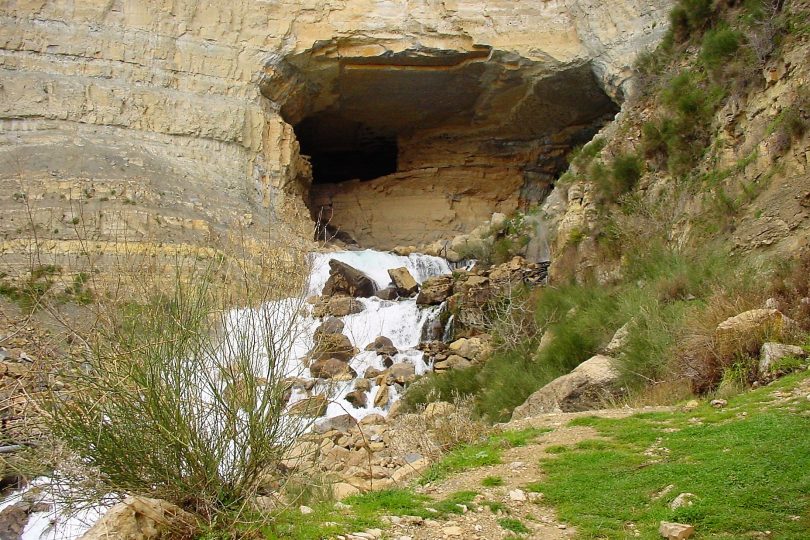Photos by Peter Steele (RAS delegate)
The waterfall at Afqa is the source for the River Adonis and is located on a 600-foot (180 m) bluff that forms an immense natural amphitheatre.[6] The river emerges from a large limestone cave in the cliff wall which stores and channels water from the melted snow of the mountains before releasing it into springs and streams below.[6] At Afqa, several watery threads flow from the cave to form numerous cataracts, a scene of great beauty.[6] The cave has over two miles (three km) of known passageways inside.[14]
A great and ancient temple is located here, where ritual prostitution was practicised until the time of Constantine.[15] Sir James Frazer attributes its construction to the legendary forebear of King Cinyras, who was said to have founded a sanctuary for Aphrodite (i.e. Astarte).[12] Reconstructed on grander scale in Hellenistic times, then destroyed by the Emperor Constantine the Great in the fourth century,[16] it was partially rebuilt by the later fourth-century emperor, Julian the Apostate.[6] The site was finally abandoned during the reign of Theodosius I[6] Massive hewn blocks and a fine column of Syenite granite still mark the site, on a terrace facing the source of the river.[12]
The remains of a Roman aqueduct that carried the waters of the River Adonis to the ancient inhabitants of Byblos are also located here.[6]
https://en.wikipedia.org/wiki/Afqa

Excellent photographs Peter, thank you. It looks like they were taken in Winter or early Spring?
Now that really is the “source” of major river! How much more impressive than, say the source of the Thames!